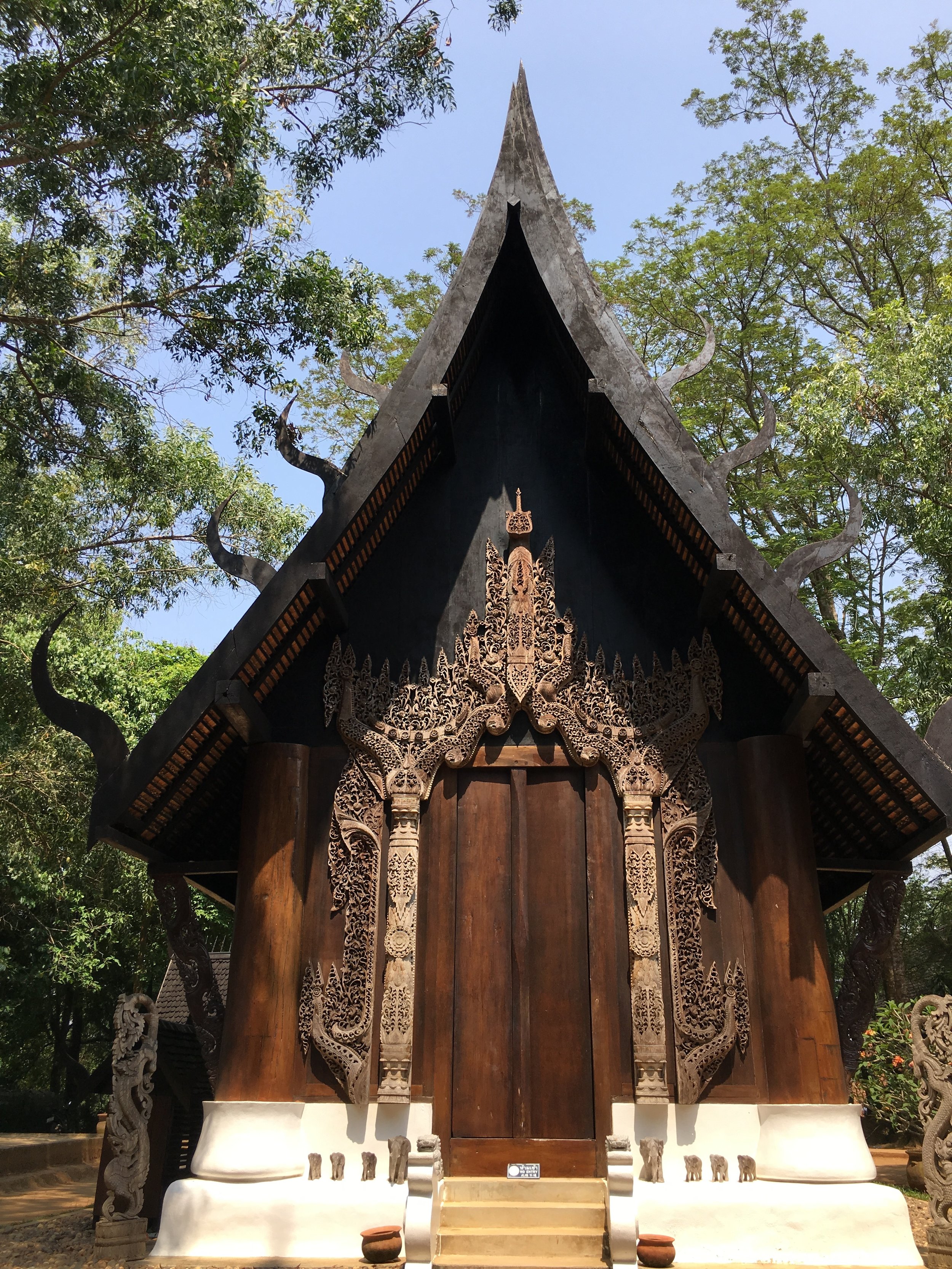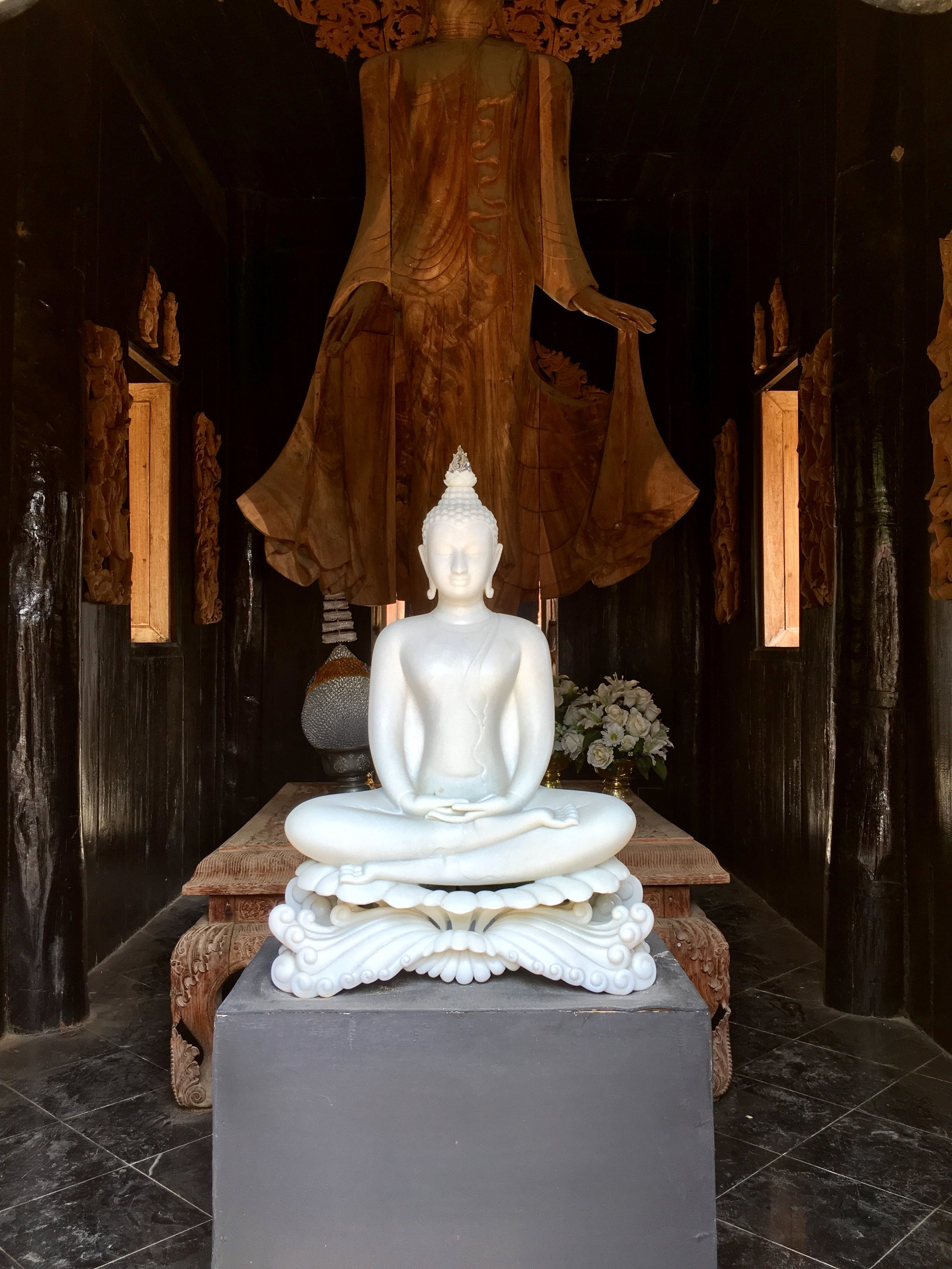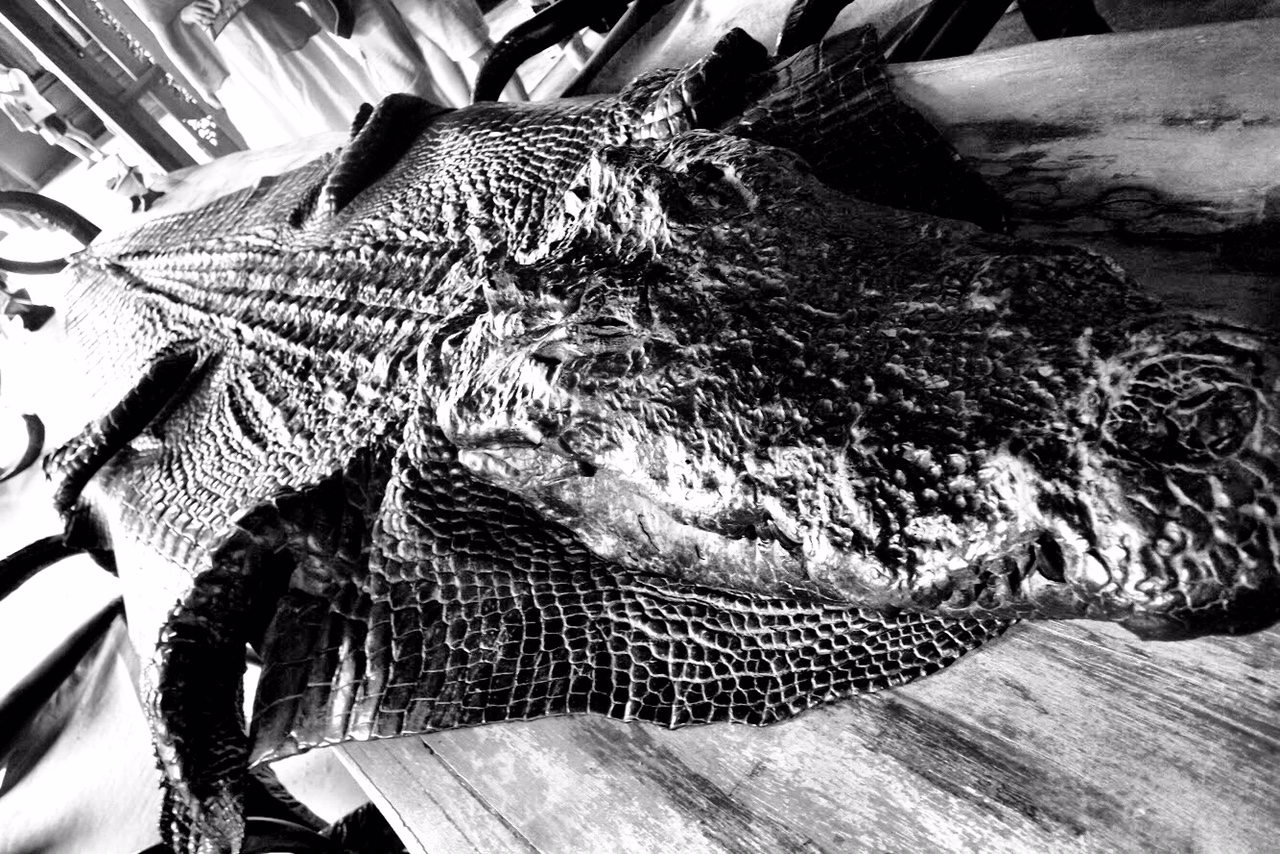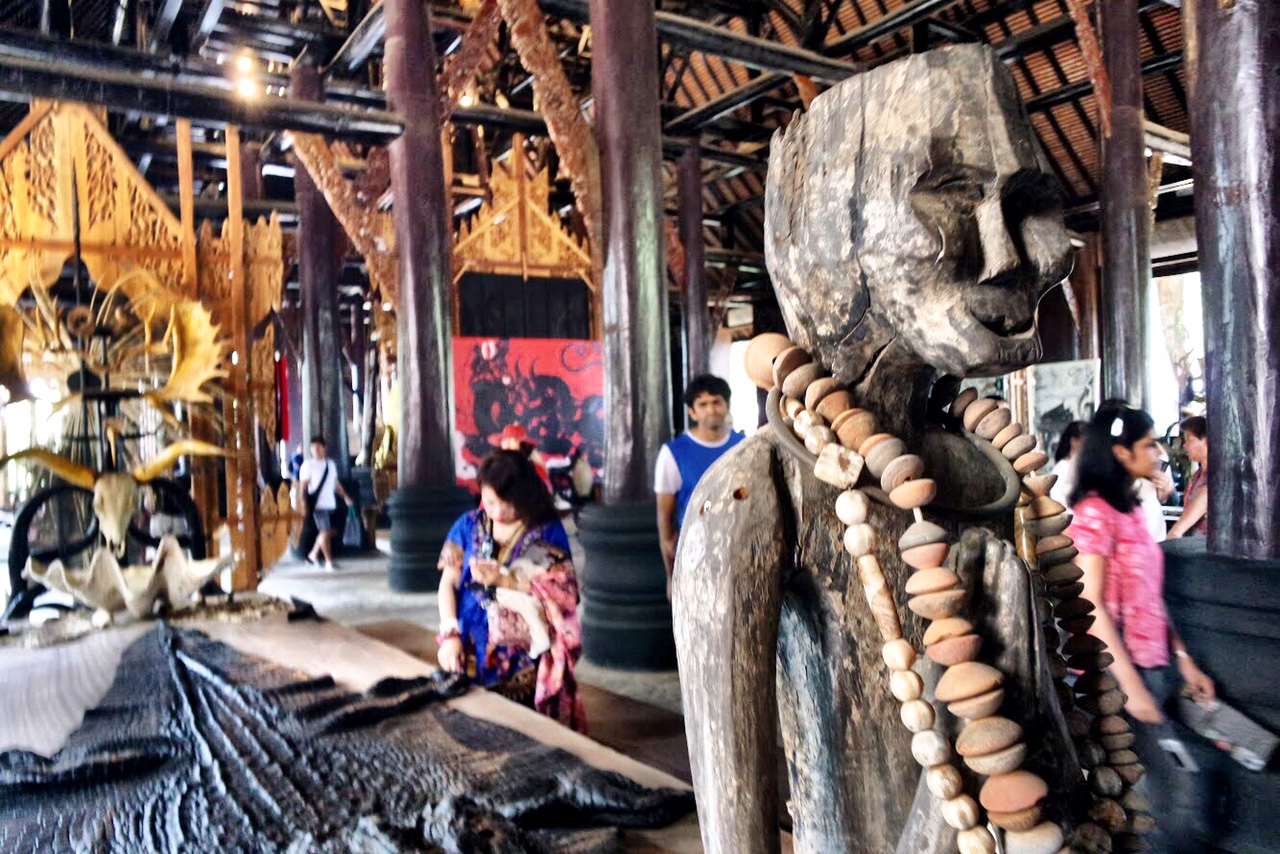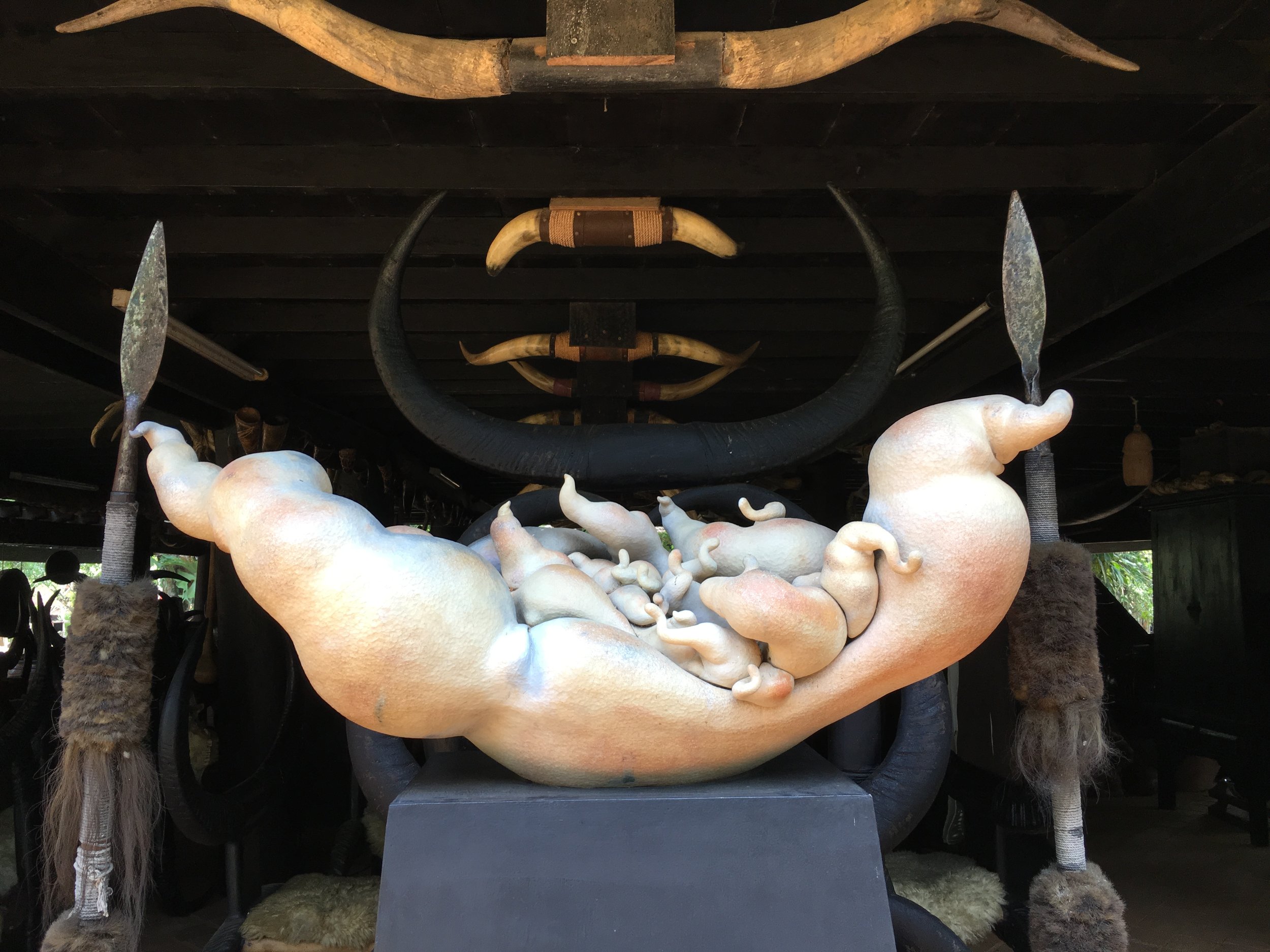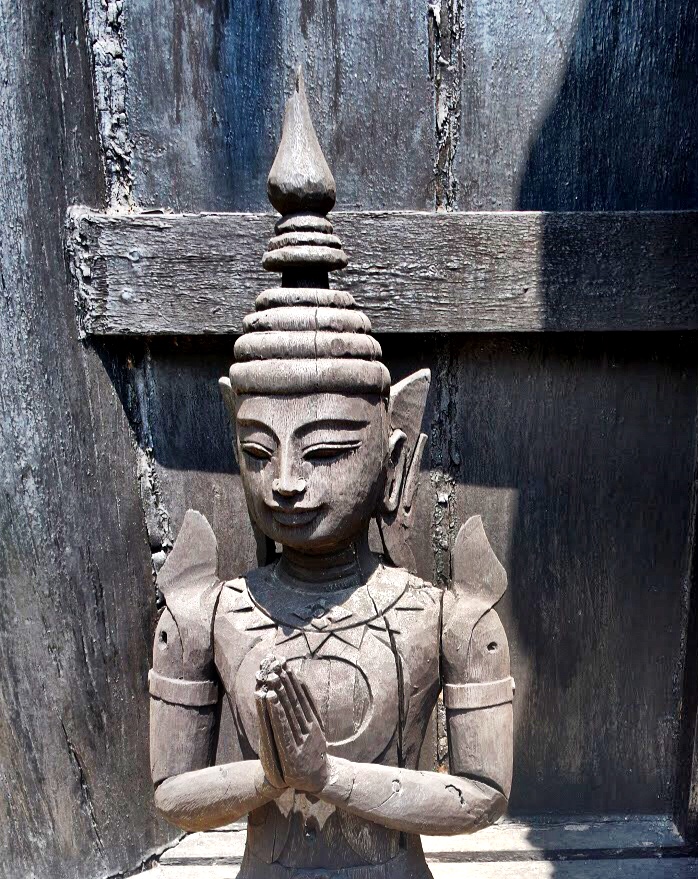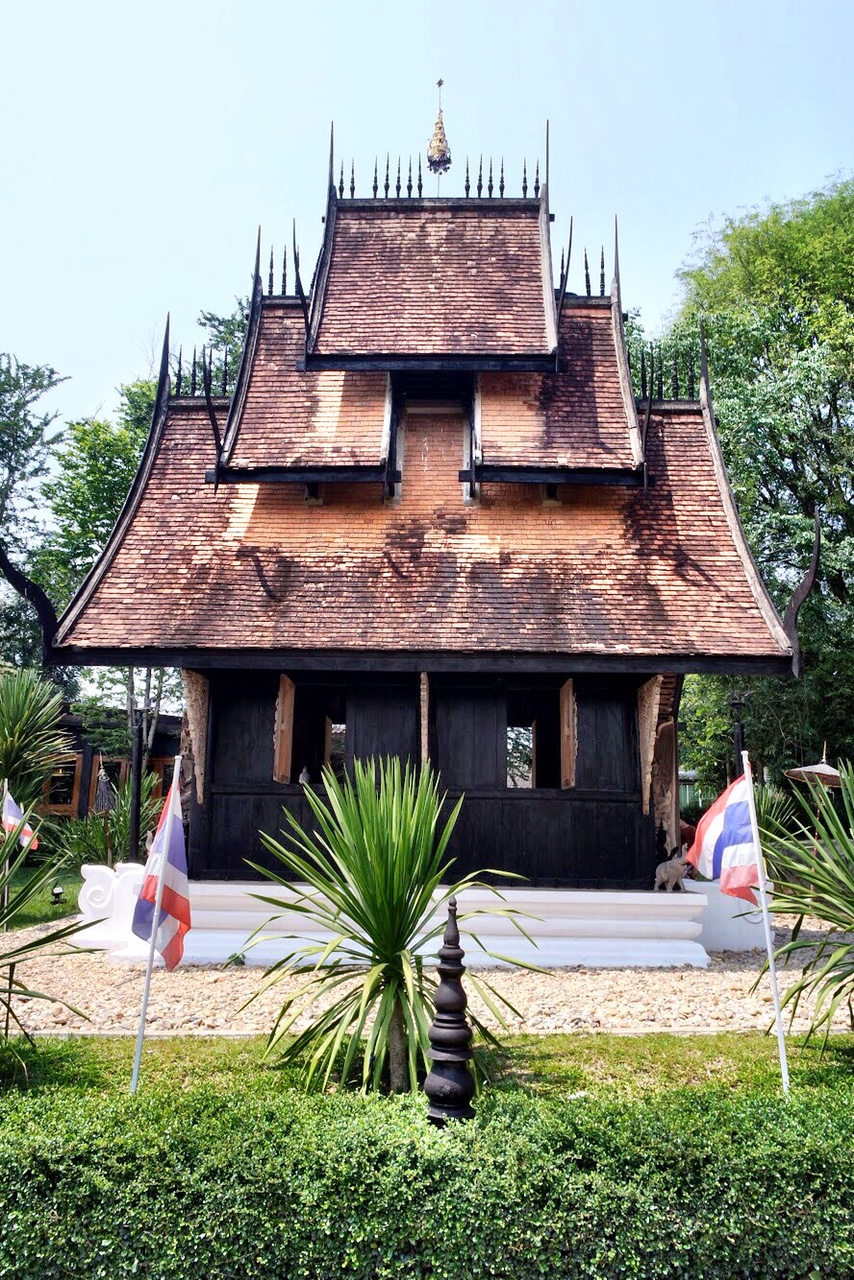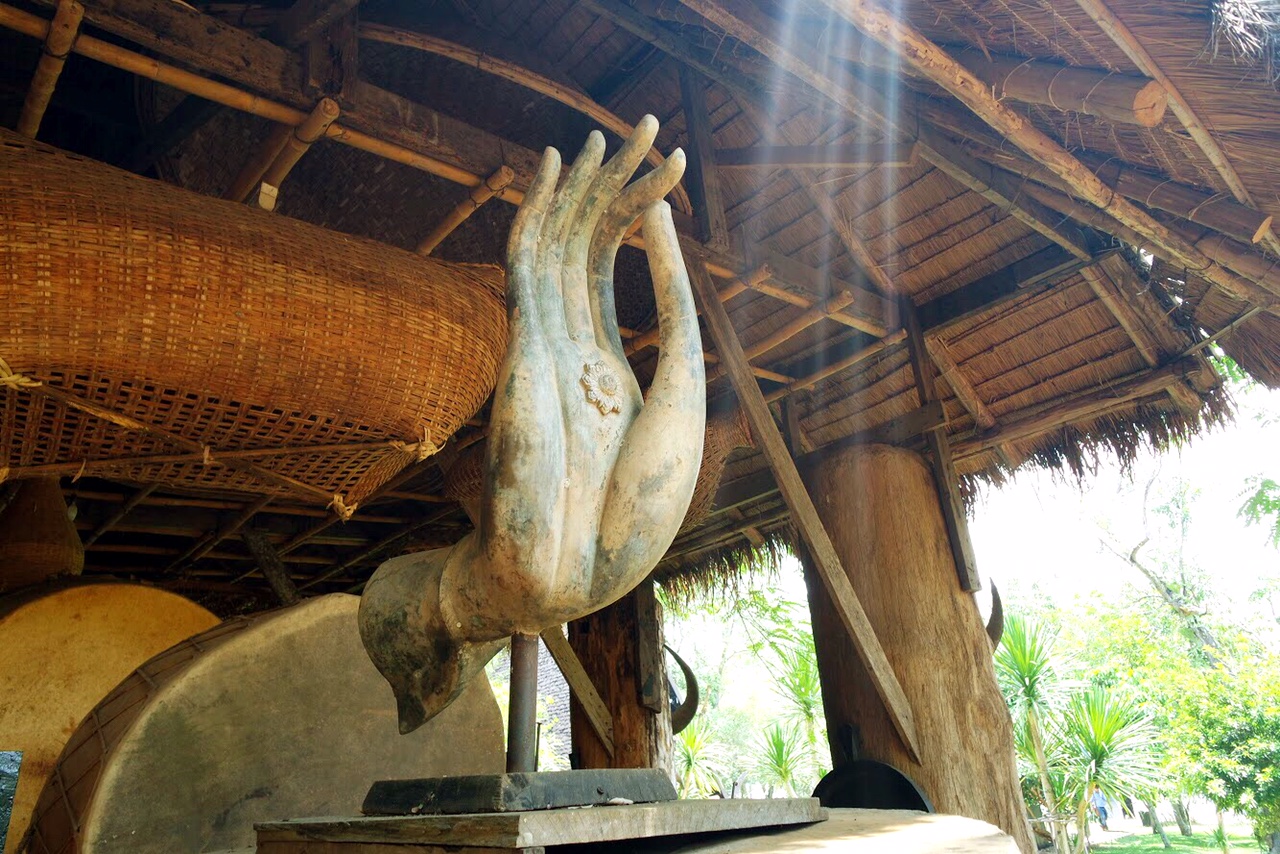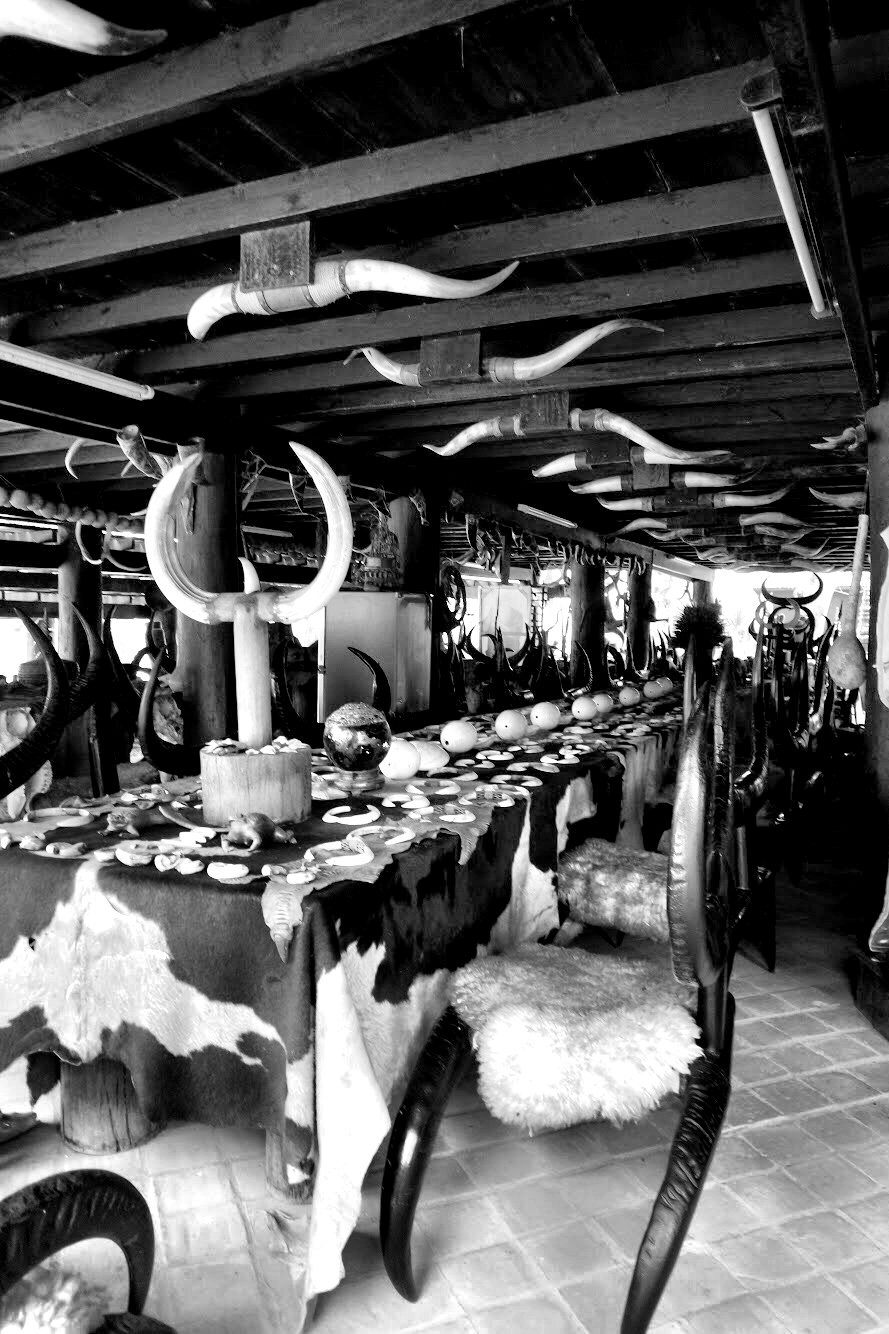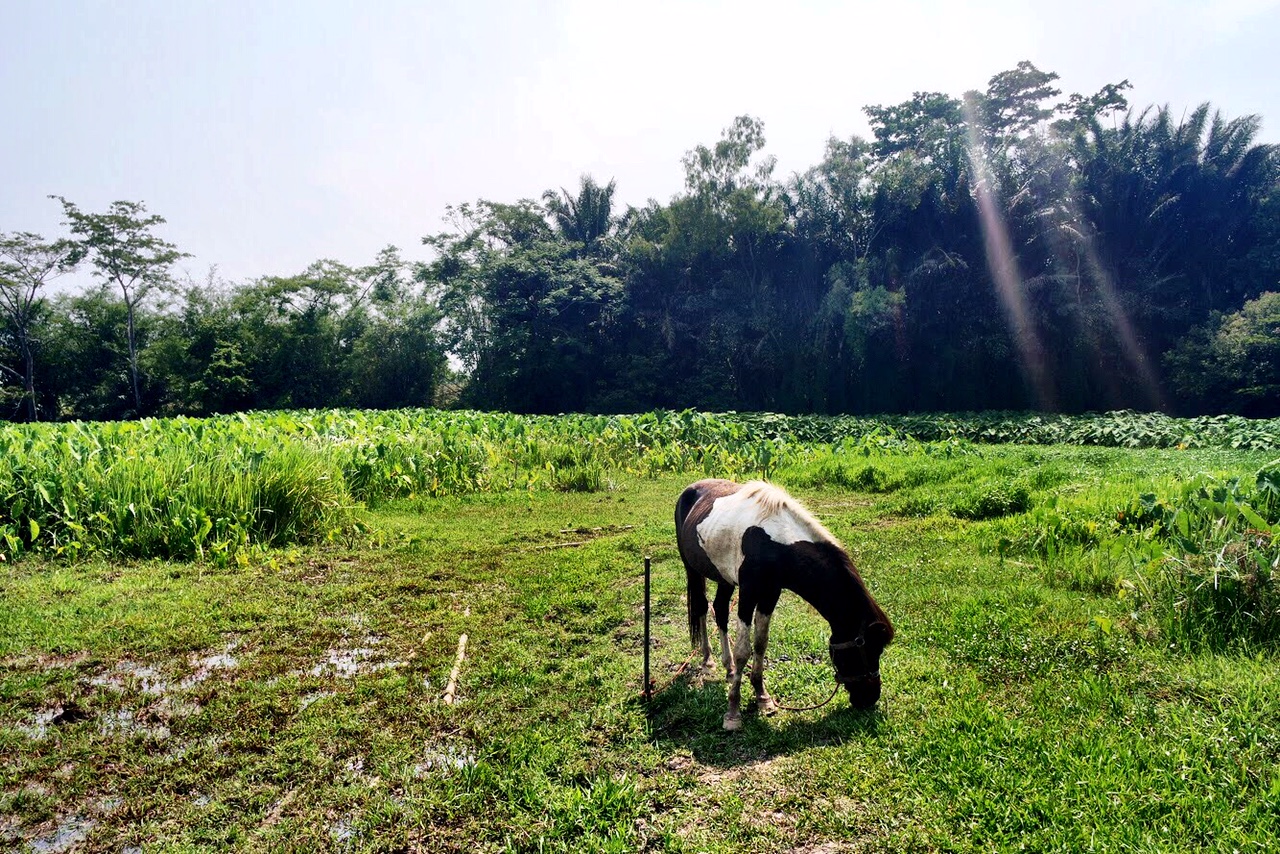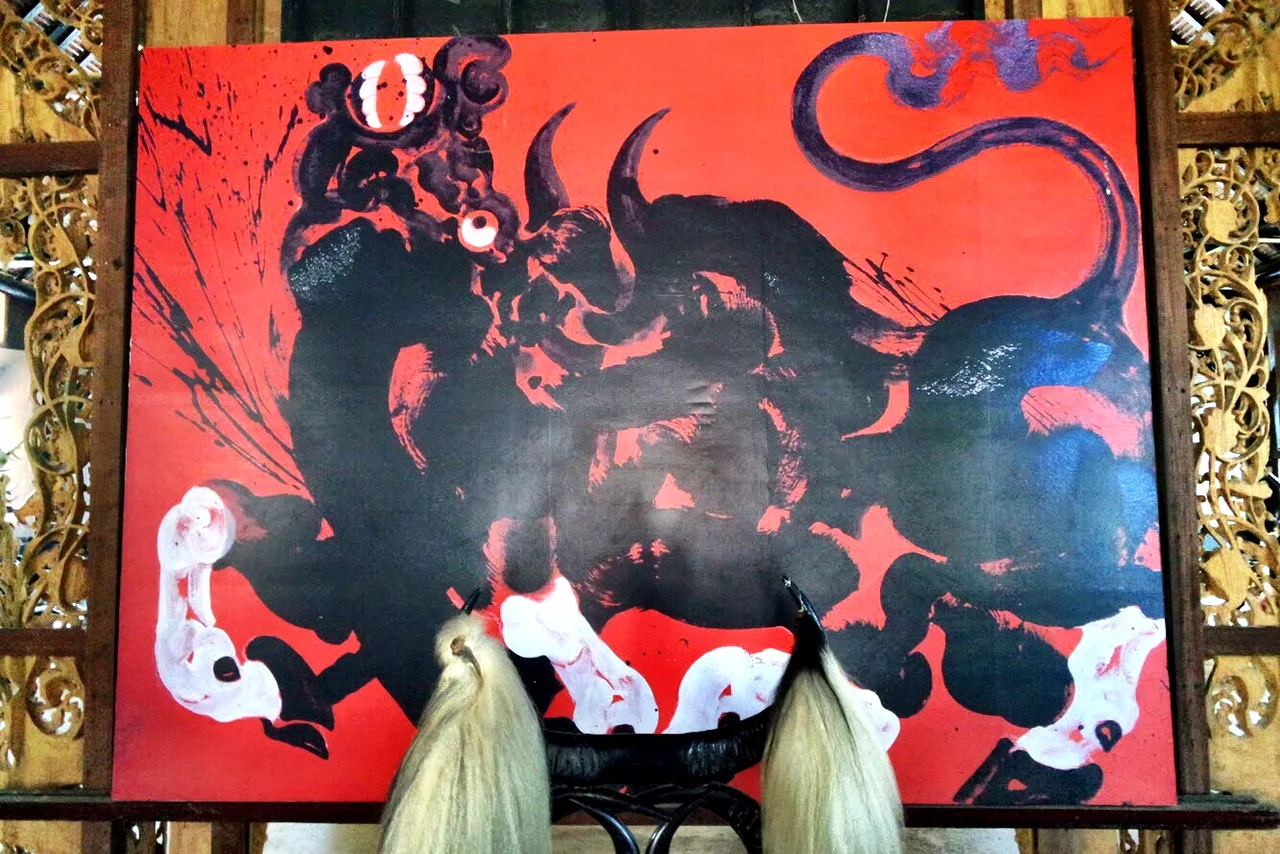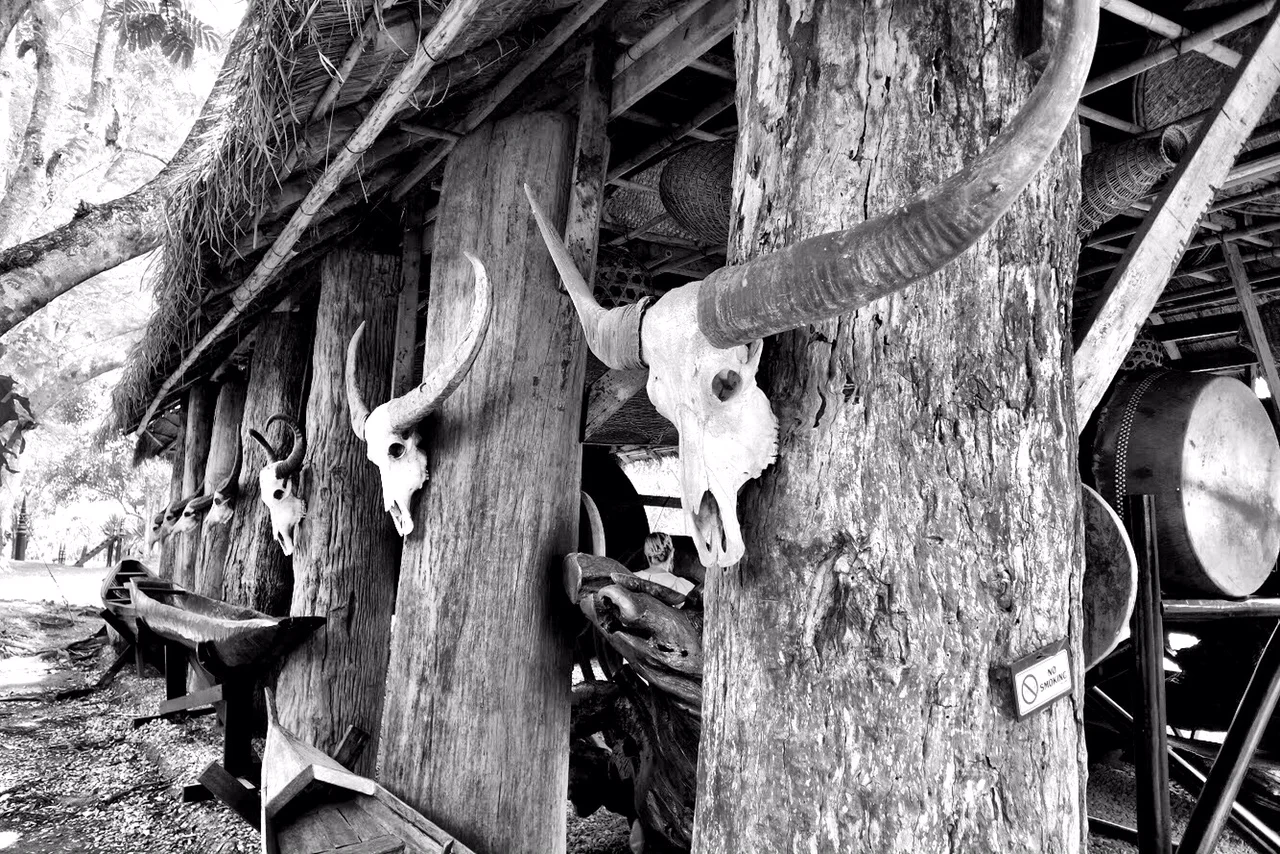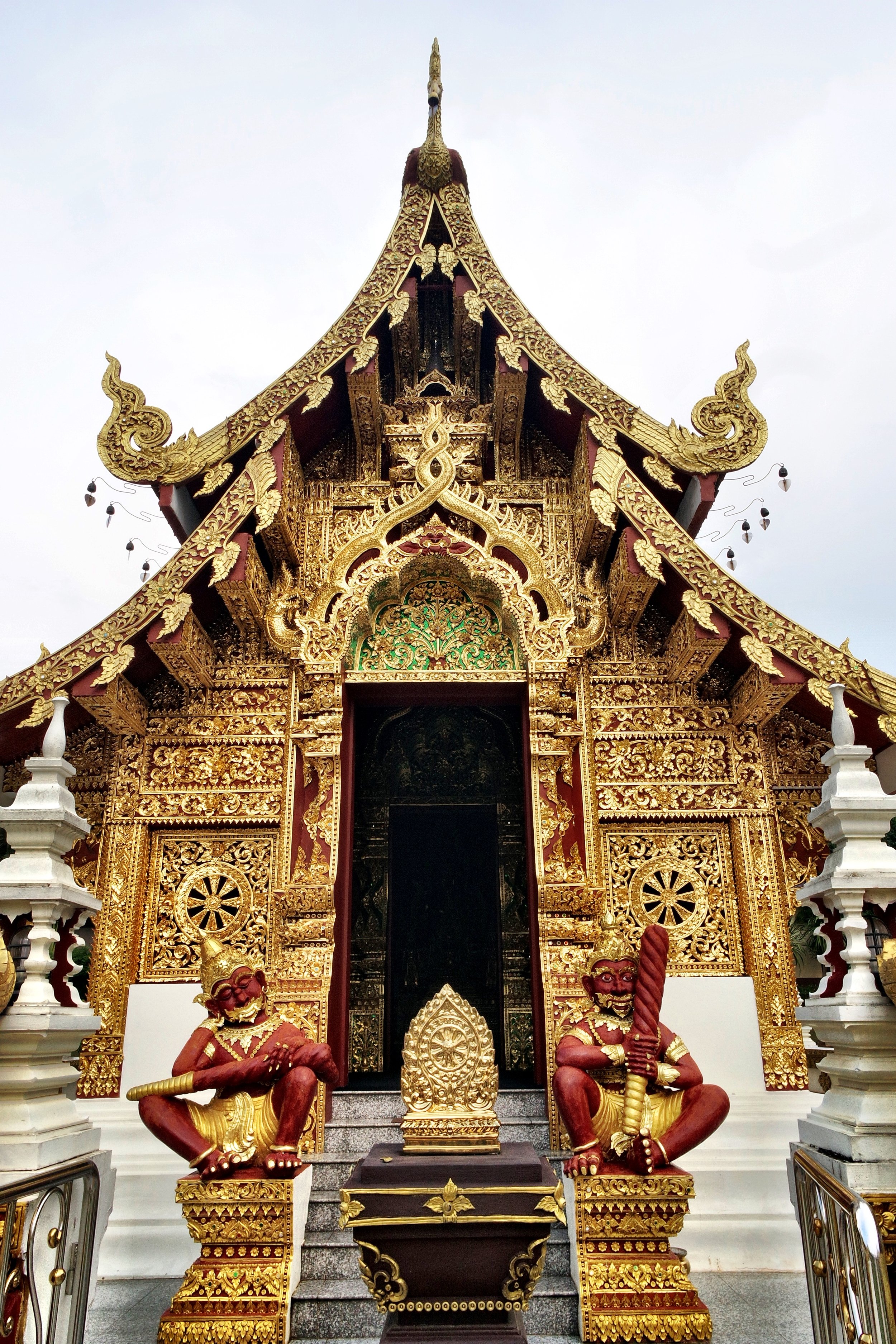This Northern Thailand museum is the polar opposite of the White Temple. You certainly don’t get to see a penis shaped like an eagle there.
The dark, weathered exterior of Baan Dam’s Main Sanctuary Hall appears a bit sinister
Baan Dam, literally the Black House, is the macabre vision of one of Thailand’s most famous artists, Thawan Duchanee. In many ways, the museum acts as a dark reflection of Wat Rong Khun, commonly referred to as the White Temple, located on the other side of the city of Chiang Rai. Where the White Temple strives for pristine perfection, the Black House Museum revels in a melancholic primitivism.
The museum, including the Sanctuary of Rama, is the vision of one of Thailand’s most famous artists, Thawan Duchanee
Baan Dam is the yin to the White Temple’s yang. The Black House was conceived over a period of 36 years and functioned as Duchanee’s residence and studio. Though the White Temple feels much more like a traditional wat (Thai for temple), neither of these are actually religious structures; they’re both essentially museums.
“Where the White Temple strives for pristine perfection, the Black House Museum revels in a melancholic primitivism. ”
You could imagine pagan rituals taking place in front of the Xieng Thong House
Black List
The museum campus struck me immediately as foreboding — especially after the pureness of the White Temple. The Main Sanctuary Hall, off to the left, looks like a temple, but it’s made of wood and is stained black and dark brown. The more you look at it, the more something seems off. Its gables are steeper, and the barge boards look like they’re coated with dried blood. The tips are made of metal pointing upward like sword blades, giving the structure a menacing demeanor. The building literally looms above you.
The doors to the main building have intricate carvings of demons with animal-headed penises like the eagle seen here
As you enter the front doors, be sure to admire the elaborate carvings. One set features contorted demons with animal-headed penises — the eagle one certainly brings a whole new meaning to the word “pecker”!
A bizarre self-portrait with a string rising up to an image of the Buddha
Inside, the soaring exposed-beam ceiling rises above, and you’re greeted by two likenesses of the artist: an abstract obsidian black figure standing within a silver offering bowl with a string tied around his waist and a larger detailed white bust elevated upon a flurry of mythic beings. The string rises high above to a likeness of the Buddha, symbolizing the yearn for enlightenment.
Duke peeks out from the grouping of pillars in this one-of-a-kind museum
Where’s Wally? Having fun in the Main Sanctuary Hall, the largest gallery space
Within the hall are a forest of elaborately carved wooden columns, screens, thrones and long wooden tables. Crocodile skins lay splayed open atop one of the tables, while another features a runner made from a monstrously large snake. It wouldn’t surprise me if I learned the Dothraki from Game of Thrones gather here.
Light wood arches balance out the overall darkness of the space
A throne made of animal skins and horns
The chairs, some evoking thrones, are constructed of leather and animal horns. They don’t particularly appear comfortable, but as Aegon the Conqueror said in George R.R. Martin’s fantasy epic, “A king should never sit easy.”
Supposedly, all the taxidermied animals at Baan Dam died of natural causes — which makes the place more spiritual and less sadistic, Atlas Obscura reports.
A painting of a bull by Duchanee
A couple of Duchanee’s large paintings hang in the middle of the hall, bright crimson canvases covered with black slashes and swoops in his signature style.
Escape the sun at the Rest House. There are skulls and horns galore at Baan Dam, giving the museum a primitive feel
We exited through the back door. Most of the buildings on the grounds aren’t open to the public. But you can wander through an open-air gallery to the right that houses more bones, horns, skulls and animal skins, laid out in symmetrical rows, covering the tables and beams. Keep an eye out for the phallic sculptures sprinkled throughout.
Baan Dam’s exploration of the darkness lurking within humanity is somehow avant garde and primitive at the same time. It’s said to have the largest collection of animal remains made into furniture in the world. There’s a sense of death everywhere, the impermanence of life being a major Buddhist theme.
The white domes are modern takes on stupas (the reliquaries of Thai temples) and are covered with cool graffiti
A glimpse inside one of the stupas
The white domes off to the side are modern takes on chedis, or stupas, the spired monuments that house sacred relics that are found on every wat complex. These, though, seem like American Indian sweat lodges (Duke read a story they were designed for a hill tribe farting ritual), and they feature really cool street art graffiti on their exteriors.
This strange building called the Hornbill House was the artist’s home when he was on site
A big black submarine/sea creature-like building with round glass porthole windows, half sunken into the landscape, was said to be where Duchanee slept when on site. It wouldn’t surprise me if his ghost roamed the complex now.
Once we were finished exploring the museum, we bought ice cream at a little stand out front and some caffeinated beverages at the nearby coffeeshop before our driver Tommy took us to the crazy fun Wat Sang Kaew.
Thawan Duchanee, the man behind the Black House Museum
Portrait of the Artist: Thawan Duchanee
As mentioned, the man behind this dark museum is Thawan Duchanee. The local boy earned a Ph.D. in metaphysics and aesthetics from the Royal Academy of Visual Arts in Amsterdam, the Netherlands. He first took up studies at Bangkok’s Poh Chang Academy of Arts before moving on to study under the Italian painter Corrado Feroci.
I’ve read that Duchanee was a student of Chalermchai Kositpipat, the man who created the White Temple, and that Kositpipat was a student of Duchanee. I’ve also read that both were freelance artists and never taught a day of their lives. Either way, they tend to get lumped together: One created a vision of Heaven, while the other created a version of Hell.
In 2001, Duchanee was officially lauded as a National Thai Artist, but his controversial style wasn’t always popular. “Some of his early work shocked a conservative Thai nation and accusations of disrespecting Buddhism resulted in some people physically attacking his paintings,” Thaizer reports.
Leading figures in Thai society, including the former prime minister Kukrit Pramoj, championed Duchanee’s work. This helped the artist score contracts to paint murals at a number of Thai embassies, and prominent Thai companies to commission work from him to display in their headquarters.
Duchanee combined various elements from traditional Burmese, Tibetan and local Lanna Thai art to create a singular style of his own.
At the end of his life, he was bald up top and sported a long, flowing snow white beard — evoking the stereotype of the wise old man.
He died in 2014 at the age of 74. His unique legacy lives on at Baan Dam Museum. –Wally
“The White Temple is a vision of Heaven, while the Black House Museum is a version of Hell.”
Baandam Museum
414 Moo 13 Nanglae, Muang
Chiang Rai, 57100 Thailand



